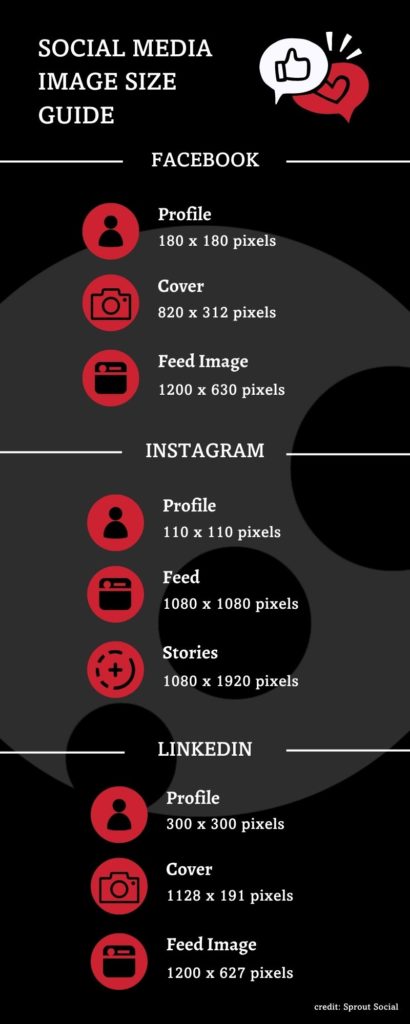In New England, everything comes to life when summer arrives. The days stretch longer, Fenway beams with “Sweet Caroline,” and umbrellas color our beaches with whimsical shades. No longer entrapped by our winter layers, summer is prime time to be social—and to be on social. Capture it all with our seven social media strategy tips for summer success.
1) Decide Which Platforms Are Right for You
Your time is valuable and should be spent on the platforms that provide the most benefit. Luckily, there’s one factor you can rely on to make the final decision: your audience.

Stay up to date with each platform’s demographic and psychographic data for the most accurate targeting, because social media constantly changes. For example, Facebook used to be THE place for young consumers. However, now it’s also home to an older demographic, and some of those younger consumers have migrated toward other platforms. Check in quarterly to see which platforms your audience is using, and pivot to their behavior. Hootsuite is a great resource which produces a yearly report on each platform’s user data, along with other resources.
2) Look the Part
Dress for success doesn’t just apply to the workplace. Your social media platforms act as a first impression for many of your consumers. They should be eye-catching, informative, and personable.
Take time to ensure your profile pictures and cover images represent your brand in the best way possible. We’ve gathered each platform’s dimensions to help you embrace your inner photographer:

Also take a look at your writing. The “About” section is much more than a place to provide the necessary information—it’s an opportunity to sell your brand. Consider how you would speak to someone to get them excited about your business. Then, type it into the field verbatim. You’ll be surprised by how natural your writing sounds, and you can always use Grammarly to polish.
3) Prep Your Social Media Content Calendar
Hardly anyone likes to be interrupted all the time. When you plan your posting based on the quality of your content, rather than the quantity, your audience will thank you for considering their time and attention (although Tik Tok’s algorithm may differ).

Blank calendars can be intimidating, which is why we recommend taking social planning step-by-step: mark major events/holidays, define your content pillars, rotate the content pillars, and note trends.
Major events and holidays are the easiest to plan, since they’re most likely already on your calendar. Make note of national days, national months, and even pop culture events (like the Met Gala for our red-carpet watchers out there). Keep in mind that not every holiday has to be celebrated online but ones that apply to your business can excite your audience—like National Learning and Development Month if you’re in higher education.

With major events and holidays marked, you can start planning your original content. Begin by thinking of broad categories, also known as content pillars, that you would like your posts to center around. For example, if you’re a senior living community, one of your content pillars could be activities. For this, you would plan posts that fall under that pillar—calendars, behind-the-scenes, resident reviews, pictures of residents having fun, and more.
By defining content pillars first, it’s easier to brainstorm specific posts and determine the pacing. Posting once or twice a week is a great way to get started and rotating the pillars keeps your audience engaged. As time goes on, make a note of which pillars your audience interact with the most and adapt your strategy to match.

While planning can provide structure, it’s also important to stay flexible. Some things just can’t be predicted—like when a coworker bakes delicious cookies for the whole office or when a trend goes viral (personally, we got a kick out of the Bernie Sanders meme). And these unpredictable moments can add authenticity to your social media presence—making you more favorable in the eyes of your consumer.
4) Act Natural
Think about the context. When a user sees your posts, they’re usually scrolling through friend updates, family gatherings, and cute dogs. For this reason, organic posts help you stand out from the crowd without jarring your viewer.

Organic posts are authentic, unpaid posts. They aren’t meant to promote your business or sell a product. Rather, they’re an opportunity for users to keep up with your brand. Employee features, events, and useful articles are all great ways to be organic and maintain your brand’s image.
5) Know When To Boost
While organic content is a large part of your social media strategy, there is a time and place for paid content. If you’re trying to recruit new business, for example, social media is a great way to get in front of your prospects with a click of a button (more or less).

However, with anything you invest in, consider the return. A majority of platforms provide you with a guided set-up for how to best reach your target audience, and you can find the prices on their websites. Start small to test the waters and measure results, then grow your efforts accordingly.
6) Interact With Your Audience and Leverage UGC
Social media is a conversation, meaning interactions go both ways. Set some time apart each day to check how people are reacting to your posts. It’s ideal to have someone on your team responsible for this to keep your responses consistent and to track changes.

Also keep an eye out for user-generated content (UGC). Are people using your product? Have they written a review? Did they “check in” at your location? As much as we’d love consumers to trust us, the reality is that people trust people over brands. In fact, over 88% of people surveyed by Nielsen in 2021 trust recommendations from people they know. Leverage the authentic content created by your users to increase trustworthiness and brand awareness. Share their posts or ask if they’d like to be featured on your page—it’s a win-win.
7) Check In: Return on Relationship
So, you’ve done the groundwork. Your pages look tidy, your calendar is full of posts, and you’re interacting with your users regularly. Now it’s time to let things play out, and see how things are going.
We recommend checking social insights on a monthly basis. Look for increases in followers, your follower demographics, high-performing posts, and engagement rates. Each platform usually has an analytics section available to businesses, but you can also use analytics tools.

Although different, most insight metrics can help you determine your return on relationship (ROR). Created by Social Media Strategist Ted Rubin, ROR is the value of nurturing a relationship. Strong relationships with consumers often lead to raving reviews, recommendations, and positive word of mouth; so if your socials are engaging your viewers regularly and effectively, you’ll know your effort is worth your time.
With these seven social media strategy tips for summer, you’ll have everything you need to make the most of this sunny season. Place your brand in the best light, and nurture the roots to grow strong relationships. And if you ever find yourself unsure of how to proceed, or staring at a blank calendar, give our team a call. We’d be happy to help you get started and we can also help you keep the momentum going with decades of expertise. Think Success today to have years of social success tomorrow.